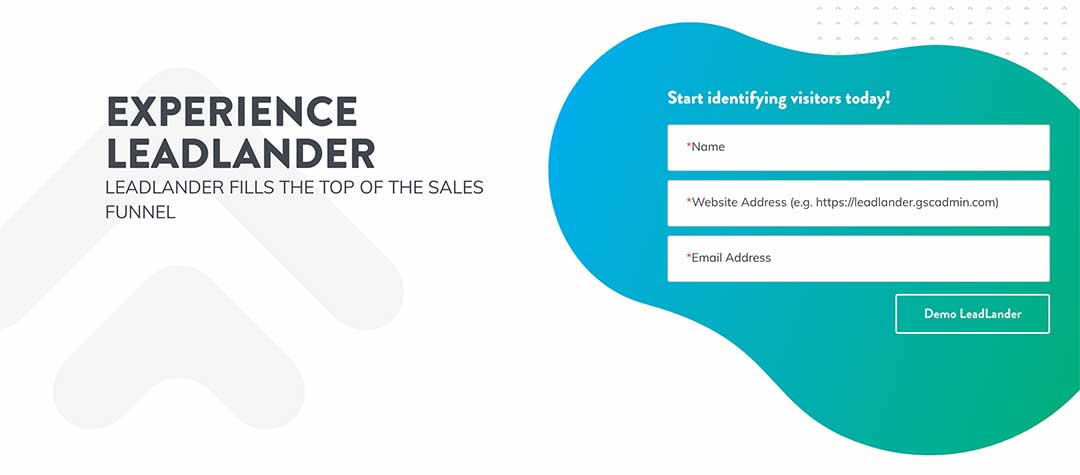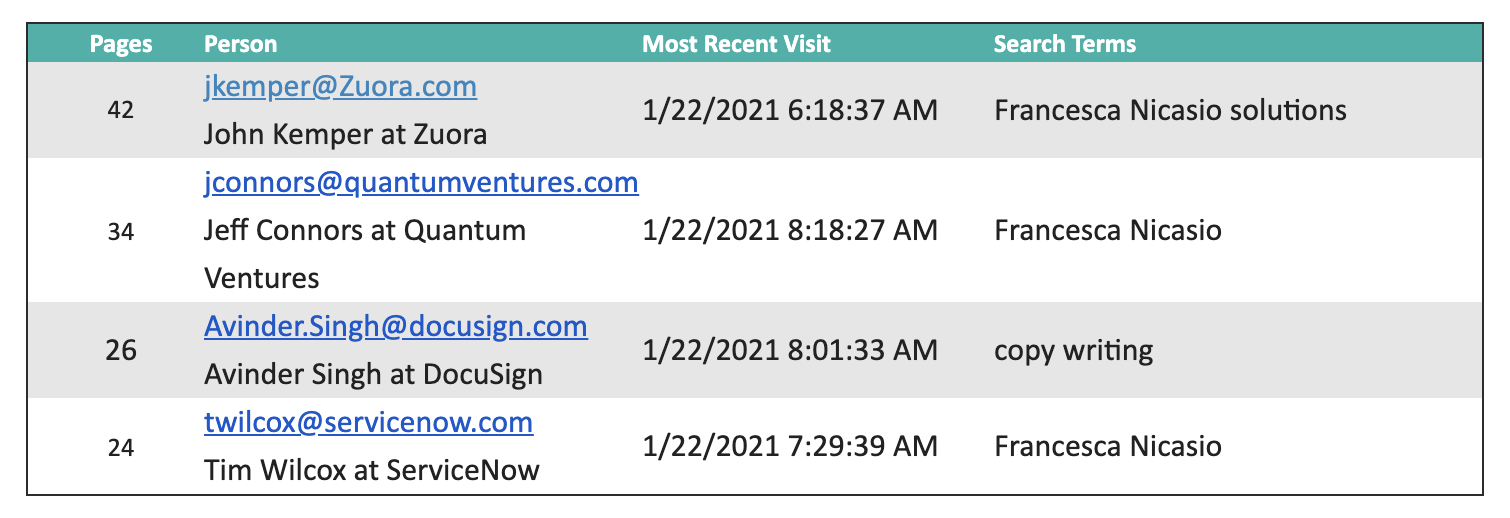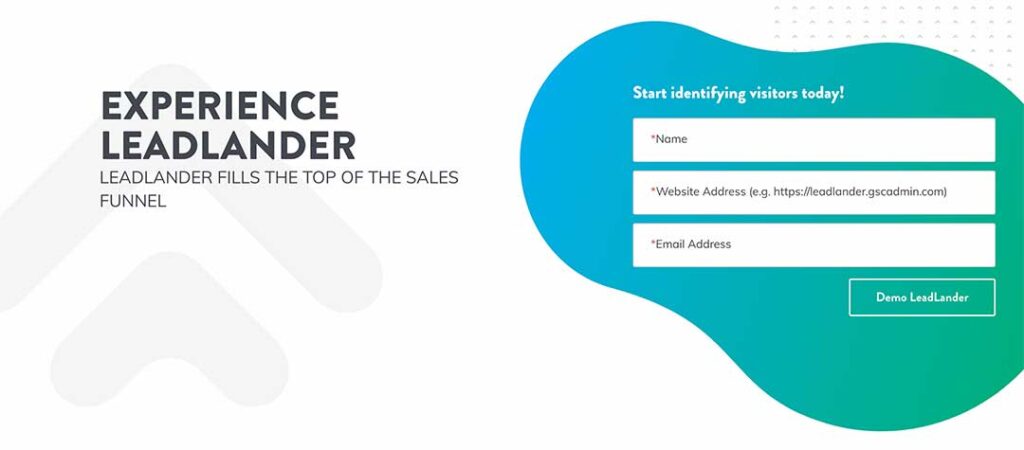Updated May 19, 2022
The most effective way for a company to reach its revenue goals is by creating a customized sales strategy that reflects its unique characteristics and concerns. We walked you through that process in our original article.
Now, we want to show you some examples of what an effective sales strategy looks like. By showing you what works, we hope that you can get a better sense of what you should be including or avoiding in your company’s plan.
Leading a B2B sales team without a well-defined sales strategy is like going on a road trip without a map. You may reach your destination, but not without wrong turns, distractions, and missed opportunities along the way.
Sales strategies give your team a clear direction, turning big-picture goals into actionable steps with strategies and deadlines. The best sales strategies are data-driven, targeting high-quality prospects, setting realistic objectives, and enabling your sales reps to perform their best. In short, this plan is one of the most important tools for sales success, so every sales professional should know how to write one.
In this guide, we’ll go over everything you need to know to create a strong sales strategy — what to include, how to prepare, and tips to implement one. We’ve also included some sales plan templates so you can get up and running quickly.
What is a sales strategy, and why create one?
A sales strategy is a living document that outlines your sales targets and defines the specific actions you’ll take to meet them. It’s a roadmap for where you want to go and what you want to achieve in a specific time period, like a month, quarter, or year. Done correctly, it will help you:
- Clarify your top-priority business goals
- Choose the right sales strategy for each audience
- Empower your salespeople and incentivize success
- Win new customers and new business
- Measure progress and optimize sales performance
- Set an accurate budget for your sales efforts
- Build confidence with investors and stakeholders
Now, let’s talk about what a sales strategy isn’t. A sales strategy isn’t a business plan, which is a top-to-bottom look at a company’s objectives and resources, usually created during the startup stage. It also isn’t a marketing plan, which covers how you’ll attract and engage your different market segments.
Your sales strategy should work alongside these other documents to get all your teams — sales managers, sales reps, marketing reps, and customer success reps — on the same page, creating one cohesive sales organization.
What’s included in a sales strategy?
There are different types of sales strategies you can use to give your business a competitive advantage.
For instance, an annual sales plan typically covers overarching goals and maps out high-level tactics for the coming year. A 30-60-90-day sales plan is an onboarding tool designed to help new sales reps or managers hit the ground running. It lays out milestones they need to achieve by their 30th, 60th, or 90th day on the job.
Territory-specific sales plans work well for businesses with multiple locations, diverse market segments, or outside sale reps with varying geographic territories. (We’ve included templates for all of these below.)
Most sales plans cover the following topics:
- Target market and ideal customer
- Sales goals and deadlines
- Team members and responsibilities
- Resources and budget
- Relevant pricing and promotions
- Key performance indicators (KPIs) or metrics
Keep in mind that this is a reference document for your team, so make sure it’s packed with information and expertise to help them hit their quota.
How do you prepare your sales strategy?
Your strategic sales plan is only as strong as the research, reflection, and evaluation that feeds into it. Before you move into the creation stage, take time to do the following:
- Examine sales performance data from previous years and look for any emerging trends.
- Assess market conditions and obstacles your business may face going forward.
- Gather insights from other departments that influence sales outcomes, like marketing or research and development.
- Identify any past opportunities or lost deals that are worth revisiting.
With that taken care of, you’re ready to launch into the sales planning process.
Create a smart sales strategy with these 13 steps
Use these eight simple steps to build your sales plan from scratch, or download one of the sales plan templates below and follow along from there.
1. State your company’s mission, vision, and positioning
One major purpose of sales strategizing is to get everyone aligned and working toward the same goals. That means each member of your team needs to understand what your company aims to accomplish, the unique value your products or services bring to market, and how your business outshines the competition. So, begin your sales strategy with your company’s:
- Mission statement
- Vision statement
- Value proposition
- Competitor overview
This step also helps you develop a sales approach that’s in line with your company’s brand identity.
2. Describe your target market
Identifying your target customer for every product or service is crucial. If you’re chasing the wrong prospects or trying to upsell the wrong customers, no amount of lead nurturing or follow-up will convince them to close the deal.
Set your team up for success by including an ideal customer profile. For a B2B company, a customer profile is a detailed description of a customer who represents your target buyer. It’s similar to a customer persona or buyer persona, which is a fictional representation of your customers, but instead focuses on factual information like:
- Industry or vertical
- Company size
- Annual revenue
- Buying behaviors
- Pain points
There are many tools and methods you can use to compile demographic information, like industry reports or customer surveys. First, look at your existing customers. What do they have in common? What makes them a good fit now? Compile these qualities into your profile.
As a salesperson, it’s easy to get lost in quarterly quotas and new product pushes. Your customer profile will remind your team to always put your audience’s pain points, needs, and wants ahead of your own, which leads to better sales pitches and happier customers.
3. Forecast your sales and set realistic goals
Your sales plan template should have an end goal with a number marker. Use whatever metric you choose – sales, customers, revenue, etc. Utilize anything that will tell you whether or not you’ve been successful.
As you determine what you want to achieve with your sales plan, realism is essential. Do your homework to determine:
- The size of the market
- Company goals
- Experience of the team
- Resources available to the business
When you set your overarching goals for your team, avoid wishful thinking or personal biases. Take a look at last year’s forecast and results to decide what will be realistic this year. Compare your business to other businesses in your sphere. If you are a new business, overcome the temptation to set your goal at whatever number you need to break even or become viable.
Don’t overlook the experts as you conduct your research. Schedule a consultation with individuals who know the most about your business. You should also set up meetings with your team members to get their opinions and feedback on potential goals for the business. They’re there to help you.
4. List your team roles and responsibilities
Next, do a team headcount and write down everyone’s responsibilities. Maybe you’re one of three sales managers overseeing 30 sales reps. Maybe you have separate sales enablement and sales operations teams. Include tasks and expectations for each individual role or unit.
Are there any gaps in skills or experience? You may need to nurture current talent or add to your sales team. Describe the value they’ll add to your organization.
With new sales goals comes heightened pressure and competition. This is a great opportunity to revisit compensation, incentives, and team-building for the upcoming sales period. If there are relevant changes or new initiatives, add them to this section and mirror changes in the budget section later on.
5. Examine your sales and marketing toolkit
List the go-to resources your team already uses, like customer relationship management (CRM) software or task management software. Here are some of the software tools used by top companies:
- Data and lead prospecting tools
- LeadLander: Website visitor tracking
- TechCrunch: Startup & technology news
- Seamless.ai: Contact data source
- BuiltIn: Startup and tech directory
- SalesHacker: Sales news, tips, strategies, plans
- LinkedIn Sales Navigator: Contact & company database
- Sales and marketing tools
- Salesforce; Pipedrive: CRM, sales forecasting, reporting
- SalesLoft; MailChimp; CampaignMonitor: Email marketing tools
- Outreach.io; Hunter.io: Email outreach
- Slack: Team collaboration and messaging
- Olark: Customer engagement
- Outfunnel; Marketo: Marketing automation
- Sales process tools
- DocuSign: Online signature tool
- Calendly; ChiliPiper: Appointment scheduling
- Zapier: App integration platform
You can also include any training modules, internal sales documents, or other sales enablement tools that reps rely on.
Try LeadLander Today

6. Go over your prospecting strategy
More than 40% of salespeople say that sales prospecting is the most challenging part of the sales process. As one of the biggest roadblocks your team will face, your prospecting strategy should be well-defined and up to date.

Describe how you’ll generate leads. For example, the sales team might use outbound tactics, like cold calling and store visits. The marketing team might drive leads using inbound marketing tools like emails, social media posts, and paid advertising.
Whether you have a large or small volume of leads, it’s crucial to incorporate lead scoring or qualifying into your business strategy if you haven’t already. This will help you understand which prospects have the strongest possibility of closing before you even begin outreach efforts.
Real-time prospecting software like LeadLander removes the guesswork from the sales cycle. You can quickly pinpoint which companies are responding to your sales efforts and the solutions they’re hunting for, allowing you to tailor your sales tactics to each prospect.
7. Determine your sales goals
Once you’ve listed out your company goals, target market, team, sales enablement tools, and prospecting strategy, it’s time to zero in on your sales goals. Sales goals are typically anchored to revenue targets, like selling $100,000 each quarter, or volume targets, like 50 closed deals or 80 new customers per sales rep.
At a large company, you’ll likely derive many of these goals from high-level company revenue goals set by sales leaders, and have to do some reverse-engineering to figure out sales quotas.
In any case, let data guide your goal-setting. Think “Ambitious but achievable.” Each target should motivate your team to reach or stretch for their objective, but also be realistic given factors like time period, available market, team headcount, and past sales performance. Give each goal a deadline and break long-term targets into smaller monthly or weekly chunks to help reps stay focused.
8. Distill it all into your sales action plan
Although every step of the sales plan is vital, the action plan is considered the key deliverable. It’s where you get tactical — drilling down into the specific strategies you’ll use to turn your sales goals into reality. Here’s an example:
Goal: Close at least 50 deals during Q4.
- Send 200 cold emails per day
- Conduct 10 demos per day
- Develop a referral call script
- Boost commissions on referrals by 7%
Do this for every goal you set in step 6. As management consultant Peter Drucker once wrote: “What gets measured, gets managed.” Include the metrics and benchmarks you’ll use to track progress and evaluate performance.
9. Identify potential partnerships
What are the companies that could aid you in executing your sales action plan? Consider which individuals, organizations, or companies targeting the same customers as you. The goal is to identify Complementary Service Providers (CSPs) that are not in direct competition with you but offer a product or service that complements yours.
What do you have to offer these groups, and what do they have to offer you? Think about writing for publications, giving speeches, providing resources, or sharing contacts. You may discover ways to boost one another’s businesses free of charge. Helping other local businesses and adding value to the community may also advance the reputation of your brand.
10. Set a budget for your sales activities
With everything out on the table, you can estimate the costs necessary to meet your sales targets. Here are some example line-items:
- Salary
- Commission
- Software tools
- Food and travel
- Training
- Team-building activities
11. Merge your sales and marketing strategies
Sales and marketing are two sides of the same coin. Your marketing department brings in high-quality leads, and your sales department converts them into paying customers. Given how intertwined the two departments are, it’s important to take steps to ensure the relationship between the two are seamless.
One way to do that while optimizing your sales strategy is to create your marketing plan alongside it. This ensures these two important parts of your company are working toward shared goals instead of stepping on toes.
Your sales strategy will also be much more effective if it takes into account what marketing is doing because the strategy will be better tailored to address the specific types of leads.
12. Keep an eye on the competition
Your company’s sales strategy is purely internal. But that doesn’t mean you should ignore external factors while creating it. It’s important to consider your competitors’ actions while putting together your sales strategy.
Understanding who your competition is and how they’re selling their products can help you figure out how you’re going to sell yours.
For example, you might discover that none of your competitors offer a free trial of their service. If so, offering a free trial of your service is a great way to set your company apart from the competition, attract more customers, and get them to convert with your CTA. You might decide to build your broader sales strategy around the idea of offering a free trial even.
13. Keep track of meaningful metrics and continue optimizing
Even if you feel like you have the perfect sales strategy for your company right now, you need to continually evaluate to make sure it remains that way. Customers, companies, and the economy are dynamic. Your clients’ needs will shift over time, and you need to be ready to adapt your sales strategy to meet those changes as they occur.
One of the best ways to prepare yourself for this is to always be tracking metrics that show how well your sales strategy is currently working. You can do this by creating sales reports at regular intervals. You might create sales contact reports to track your company’s overall expected number of lead contacts against the actual number. You might also create revenue sales reports comparing your forecasted revenue against your actual earnings in a set period.
Keeping track of this data type will provide you with valuable insight into how your sales strategy is performing. It will tell you exactly when your existing strategy is no longer working optimally so you can update it without delay.
Although we’ve covered the major elements of a standard sales plan, you may find it helpful to add sections or use one of the different plan types below.
Free sales plan templates
Here are three fill-in-the-blank sales plan templates to try out.
- If you need an all-in-one plan: Hubspot sales plan template
- If you need multiple plan types: Asana sales plan template
- If you’re a visual learner: Venngage sales plan template
Pro tip: If you’re using a prospecting or sales management platform, see if your vendor offers tools or templates you can use in your sales planning process.

Here at LeadLander, we send users reporting templates when integrating our software with web forms and email campaigns. These reports enable you to track leads who engaged with your web forms and emails, allowing you to easily see their contact details, most recent visit, as well as any search terms used to find your company.
Successful sales strategies
Needs Satisfaction
Need-satisfaction selling is a strategy popularized by Neil Rackham, who also developed the SPIN selling approach. This method helps you determine what your buyer needs and then positions your product or service as the solution to that need.
It’s a simple idea but one that could yield profound results for your company. The key is figuring out the best questions to ask your clients so you can quickly and easily understand their core needs.
These questions will vary from business to business and customer to customer. For this method, begin by focusing on the buyer’s goals and then work backward to what they need to reach those goals.
Strategic Partnering
For some companies, it may be better to focus on building strong relationships with clients instead of using a needs-satisfaction approach. This is the idea behind the strategic partnerships strategy. It involves seeking out mutually beneficial relationships with complementary providers in your industry.
For example, two physicians specializing in different medical fields may form a strategic partnership to refer clients back and forth. When they do, both will benefit from receiving more business without any sacrifice.
Utilizing a strategy like this may be a good fit for your company as well. Consider what parts of your industry overlap without too much competition. Then try to build relationships with key people in those companies and watch your sales grow.
Script-Based Selling
Script-based selling can feel a little old-fashioned, but it can still be very effective in certain situations. This is a great approach to dealing with customers who have uniform needs that don’t vary.
Telemarketers often use script-based selling because they sell basic products to address one or two needs.
Having a script to follow is also effective because it helps salespeople track everything they want to talk about during a sales conversation. Scripts can prompt a smoother flow of dialogue between the buyer and the seller.
Some salespeople will even ask their buyers a few questions to determine which version of a sales script they’ll use while speaking with them. This can be very effective.
That said, if you’re going to use a script-based selling strategy, make sure you don’t sound like you’re reading a script. Practice reading the script aloud in a natural way a few times to fix this problem.
Sales strategy forecast for 2022
With ever-evolving technology, sales strategies change year by year. Here are some 2021-2022 specific techniques to incorporate into your flexible sales strategy.
Content marketing: Content marketing has been essential to any sales strategy since the 1940s, but it’s changed immensely through the decades. Your content may include images, videos, articles, captions, eBooks, webinars, and more. Develop free content to capture the attention of potential clients and bring them to your website or social media pages.
Templates are another recent trend – guests love free emails, planning, and calendar templates to make their daily lives easier. You don’t have to spend hours on every piece of content – recycle old content in new ways. For example, take one of your list blog posts and use the content to create a helpful video.
Anything that can help your guests learn visually will attract them to your brand and foster a trusting relationship. Develop free content to capture the attention of potential clients and bring them to your website or social media pages.
Social media marketing: It’s not going anywhere, but it’s important to be ahead of the curve on the latest trends. Pinterest is now getting up to 5 billion searches per month, which is a 150% increase from 2016, according to Business 2 Community. The number of short-form videos is also taking over the internet; TikTok and Instagram Reels will continue to be critical through 2022. However, it may surprise you to know that Facebook and YouTube are still used more frequently than Instagram or TikTok. Going forward, emphasize what makes the most sense for your business model – for example, 60% of TikTok users are between the ages of 16-24, whereas the average Facebook user in the U.S. is around 40 years old. Regardless of the platform you use, bite-size content is the most popular mode of communication for 2021 and 2022.
In addition, LinkedIn is still an important part of social media marketing in 2022. CEOs, managers, and other company reps should build a presence on LinkedIn. This platform is ideal for social listening and monitoring, connecting with prospects, and LinkedIn groups. Facebook groups and Slack chats are other popular ways to make marketing connections in 2022.
Hybrid event hosting: The post-pandemic future is hybrid – you will have prospects who yearn for in-person events, and others who prefer to participate in the safety and comfort of their homes. When it comes to forums, premieres, grand openings, sales and other big events, craft a hybrid event to give prospects more freedom. In-person events are still essential for engaging with leads; on the other hand, others still prefer tuning in via technology. Prospects don’t want an average virtual experience – they are ready for outstanding virtual events. Expect AR and VR events to surface in more marketing and sales strategies across the globe.
Guest surveys: You can gather prospects and information with a simple survey. It’s easy to use WordPress or Google to create a survey. Not only can you get contact information from potential clients, but you can also acquire important information that will help you better your business. Consider using a prize draw or another incentive to encourage more survey participation.
Limited-time offers: In a world with so many options, a countdown clock can push your warm leads in the right direction. You can use a pop-up on your website or a social media post or story to explain your exciting offer. Add a visible timer on your site to create a sense of urgency (it’s easy to add a timer to your WordPress site).
Powerful tools: Guiding customers through the sales funnel is an all-consuming process, and human error can quickly destroy a sale. CRM software is an integral part of the B2B sales process. It can store prospect information, identify new sales opportunities, manage campaigns, and guarantee accuracy throughout the process.
Getting the most out of your sales strategy
Sales planning builds a solid foundation for your entire organization. Instead of ad hoc initiatives and one-off tasks, you’ll have one streamlined sales force working toward a shared goal. Remember that a sales plan is a living document. Regularly reviewing, testing, adjusting your strategy is what takes your sales process from functional to phenomenal.

